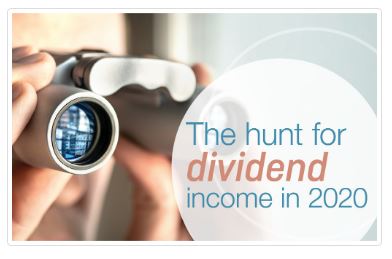2020 February Newsletter

It’s February and the summer holidays are over for most Australians, but the bushfires and drought in eastern states are far from over. Our thoughts are with everyone affected.
January was unusually busy on the economic front. The International Monetary Fund downgraded its global growth forecasts to 3.3 per cent this year and 3.4 per cent in 2021, citing downside risks from geopolitical tensions and worsening relations between the US and its trading partners. And while the US Federal Reserve left interest rates unchanged in January, Fed chair Jerome Powell said: “Uncertainties about the outlook remain including those posed by the new coronavirus”.
In Australia, the economic impact of the summer bushfires and ongoing drought is also expected to be significant. All eyes will be on interest rates in February although recent data suggests the Reserve Bank may hold off cutting rates further for the moment. Inflation lifted 0.7 per cent in the December quarter, taking the annual rate from 1.7 per cent to 1.8 per cent. Also, unemployment fell slightly from 5.2 per cent in November to 5.1 per cent in December. Both indicators fall short of the Reserve’s targets, but they are a positive sign.
Australian retail trade also improved in November, with a rise of 0.9 per cent the biggest in two years on the back of strong Black Friday online sales. However, consumer confidence remained weak over Christmas. The Westpac/Melbourne Institute survey of consumer sentiment fell 1.8% in January after a 1.9 per cent fall in December. This, along with the impact of the bushfires and drought, has hit business confidence, with the NAB business confidence index falling to six-year lows in December.
Are your insurance needs covered?

If your super balance is less than $6000 or you are under 25 and are a new fund member, life insurance in your superannuation will no longer be automatic come April.i
Letters have already been sent out to those affected by the change which is part of the Putting Members First/Protect Your Super Package legislation. If you don’t respond to the letter by advising your super fund that you want to maintain your cover, it will be cancelled.ii
Since last year, super accounts inactive for more than 16 months have been in a similar situation with automatic cancellation of life insurance if the member doesn’t opt in to continue their cover. There are a few exceptions, such as defined benefit funds, so contact your super fund if you’re unsure.
Of course, most Australians with super won’t be affected as their balances exceed $6,000 and they are aged over 25. Indeed, due to the existence of default life insurance offered through super, many more Australians have cover than in previous times.
Sometimes, however, this cover may be insufficient to cover your actual costs, should you need to make a claim.
Underinsurance still common
A 2017 survey by Rice Warner found the median death cover was only twice the median household income. Yet it’s estimated that people in their 30s with children would need replacement income equivalent to eight times their family income to continue their current lifestyle if one parent were to die.
Similarly, total and permanent disability (TPD) cover is generally only three times the median household income when four times is ideal. TPD pays you a benefit if you become seriously disabled and are unlikely to ever work again.
While life and TPD cover have grown thanks to super, only about 30 per cent of the working population has income protection insurance. Income protection pays you regular income for a specified period when you are unable to work due to temporary disability or illness.iii
Given the size of mortgages these days and the cost of raising a family, this low level of income protection cover is concerning.
You probably don’t think twice about insuring your car or your home, so why think twice about insuring your ability to earn an income should something unexpected happen?
Do regular check-ups
Insurance needs vary depending on your income, your age, your family situation and your working status.
Clearly if you have a young family and a mortgage, your financial commitments will be greater than if you have paid off your mortgage and your children have flown the nest.
That’s why it’s important to check your insurance when it comes up for renewal and/or when your personal circumstances change. For instance, if you have recently married, had a child or retired you may need to alter your level of protection.
Inside super or out?
For some, life insurance outside super may provide more tailored cover than insurance offered inside super, or you might decide to have a combination of the two.
Life insurance in super is often cheaper because super funds can negotiate group rates and your premiums are paid with pre-tax dollars. Generally, you will be covered without having to undergo a medical, but there are drawbacks.
Unlike insurance inside super, cover outside continues when you change jobs. And claims are likely to be faster as benefits are paid directly to the policy owner and not to the fund.
Also, outside super, you can insure “own” occupation rather than “any” occupation with a TPD policy. This means you will get a payout if you can’t continue working in a similar occupation to your current one. “Any” occupation is a much broader definition and can lead to a lower chance of making a successful claim.
Life insurance is a must for most people, but it will be of limited use if you don’t have adequate cover should you make a claim.
If you need help determining your current insurance needs, give us a call.
i https://www.apra.gov.au/putting-members%E2%80%99-interests-first-%E2%80%93-frequently-asked-questions
ii https://www.sunsuper.com.au/employer-news/legislation-update-oct-19
iii https://www.ricewarner.com/life-insurance-adequacy/
The hunt for dividend income in 2020
With interest rates at historic lows and likely to stay that way for some time, retirees and other investors who depend on income from their investments are on the 
Income from all the usual sources, such as term deposits and other fixed interest investments, have slowed to trickle. Which is why many investors are turning to Australian shares for their reliable dividend income and relatively high dividend yields.
The average dividend yield on Australian shares was 5 per cent in 2019 and more than that for many popular stocks.
By comparison, returns from traditional income investments are failing to keep pace with Australia’s low inflation rate of 1.7 per cent. Interest rates on term deposit from the big four banks are generally below 1.4 per cent i, while the yield on Australian Government 10-year bonds is around 1.2 per cent ii.
But with shares entailing more risk than term deposits or bonds, is a dividend income strategy safe?
Dividends provide stability
When comparing investments, it’s important to look at total returns. The total return from shares comes from a combination of capital gains (from share price growth) and dividend income. While market commentary tends to focus on short-term price fluctuations driven largely by investor sentiment, dividend income is remarkably stable.
Over the past 20 years, dividend income has added around 4 per cent on average to the total return from Australian shares.
For example, in 2019 the All Ords Index (which measures the share price gains or losses of Australia’s top 500 listed companies) rose 19.1 per cent. When dividends were added, the total return was 24.1 per cent.
So how are dividend yields calculated?
Calculating dividend yields
To work out the dividend yield on a company’s shares you divide the latest annual dividend payments by the current share price.
Take the example of BHP Billiton. Its shares were trading at $37.41 in December after paying annual dividends of $1.9178, providing a dividend yield of 5.13 per cent ($1.9178 divided by $37.41). When you add franking credits, the ‘grossed up’ dividend yield is 7.32 per cent.iii
Franking credits are a type of tax credit compensating shareholders for tax the company has already paid. Companies such as BHP with fully franked shares will have franking credits equal to 30 per cent of the gross dividend value. This is not a recommendation for BHP, simply an illustration of how dividend yields are calculated.
But a big dividend yield is not always better. A high dividend yield may signal a company with limited growth prospects, a falling share price, or both. Sometimes it’s the result of a one-off special dividend.
So how can you spot a quality dividend?
Quality counts
Investors looking for a reliable income stream need to focus on companies with quality assets and strong management teams, good growth prospects and sustainable earnings. This is what will determine the future growth in dividends and/or the share price.
In the current low interest rate, low economic growth and low inflation environment, many companies have taken a cautious approach and rewarded shareholders with higher dividends. As growth picks up, companies may allocate a greater share of profits to growing their business.
Relying too heavily on dividends from Australian shares could also expose you to risk or mean missing out on opportunities elsewhere.
Consider the big picture
When hunting for a good dividend yield, it’s important to follow fundamental investment principles. That means holding shares from a variety of market sectors, with good prospects for growth and income.
Diversification is also important across asset classes. The total return from Australian residential investment property was 6.3 per cent in 2019 (from a combination of price movements and rental yields), but in other years the performance of shares and property could be reversed.iv
And despite their lowly returns, holding term deposits with different maturity dates allows you to manage your cash flow. It also helps avoid having to sell your shares and crystallise losses in a market downturn.
If you would like to discuss your income needs within the context of your overall investment portfolio, give us a call.
i https://www.canstar.com.au/term-deposits/highest-term-deposit-rates/
ii https://tradingeconomics.com/bonds
iii https://www.marketindex.com.au/analysis/dividend-yield-scan-6-december-2019
iv https://www.corelogic.com.au/news/corelogic-december-2019-home-value-index-strong-finish-housing-values-2019-corelogic-national
Please note this information is of a general nature only and has been provided without taking account of your objectives, financial situation or needs. Because of this, we recommend you consider, with or without the assistance of a financial advisor, whether the information is appropriate in light of your particular needs and circumstances.
Copyright in the information contained in this site subsists under the Copyright Act 1968 (Cth) and, through international treaties, the laws of many other countries. It is owned by EFDB Pty Ltd unless otherwise stated. All rights reserved. You may download a single copy of this document and, where necessary for its use as a reference, make a single hard copy. Except as permitted under the Copyright Act 1968 (Cth) or other applicable laws, no part of this publication may be otherwise reproduced, adapted, performed in public or transmitted in any form by any process without the specific written consent of EFDB Pty Ltd.
EFDB Pty Ltd | Sydney CBD | Northern Beaches | ABN 64 112 871 922 | AFSL 311720
Categories
- Blogs (51)
- Budget (19)
- Community and Sponsorships (5)
- Cyber Security (3)
- Economic / Topical (36)
- End of Financial Year (8)
- Estate Planning (4)
- Foreign Exchange (1)
- Gifting (2)
- Health (16)
- Insurances (18)
- Investments (29)
- Lifestyle (41)
- Newsletters (55)
- Retirement (19)
- Share Buyback (1)
- Superannuation (27)
Recent Posts
Archives
- November 2022 (1)
- May 2022 (1)
- April 2022 (1)
- February 2022 (1)
- December 2021 (1)
- November 2021 (1)
- September 2021 (1)
- June 2021 (1)
- May 2021 (1)
- April 2021 (1)
- March 2021 (1)
- February 2021 (1)
- January 2021 (1)
- December 2020 (1)
- October 2020 (1)
- September 2020 (1)
- August 2020 (1)
- July 2020 (1)
- June 2020 (1)
- May 2020 (1)
